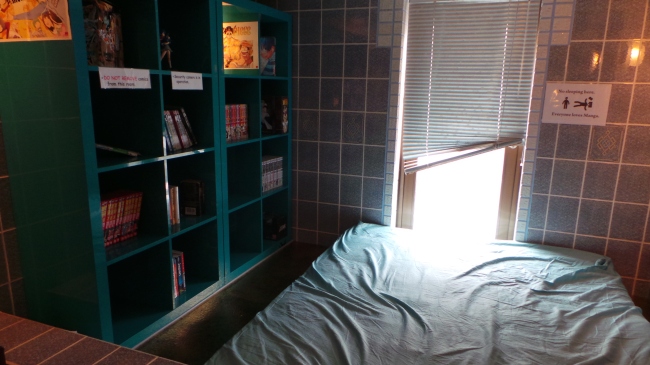Another day, another post about the endless goings-on in the Asakusa area of Tokyo. I wander aimlessly toward Senso-ji Temple, walking with my head in the clouds as I follow the distant bellow of a beating drum. It somehow slipped my mind that today was the official festival of Setsubun, but here I am now, standing in the cold amongst the eager crowd.
Thousands of people wait in front of a wooden stage constructed specifically for the event. Poor carpentry makes the stage look out of place, perhaps even unfinished. I hadn’t planned on attending today, but with nothing else to do on this gloomy afternoon, and finding myself standing here, I decide it might be best to stick around and enjoy the spirit of this age-old festival.
The television people are here, filming every second of the action. But sadly for me, and unfortunately for the television crew, the action is a little muted. First, an announcer takes to the stage and begins reading out names. Some get no reaction at all; other names cause the crowd to cheer with excitement. One name gets a huge reaction, but I was barely listening to a word the announcer was saying because I allowed myself to become distracted by a pigeon.
Eventually, the twelve celebrities waltz onto the stage. They each carry a large wooden masu box, usually reserved for large quantities of sake. At the announcer’s count, they all start throwing pouches of roasted beans into the crowd. Following the bean-throwing, each of the twelve ‘celebrities’ is given a chance to speak with the microphone, seemingly using the opportunity for self-promotion before thanking the crowds for attending.
The last person to speak on the badly erected wooden stage is Animal Hamaguchi, a famous Japanese wrestler who coached his own daughter, Kyoko. She went on to win two Olympic medals in wrestling. Kyoko was born in this area too, so it is no surprise that she was chosen to take part in the event.
After Animal has finished speaking, a man sings ‘When You’re Smiling’ by Louis Armstrong; he sings in very clear English. Some of the other guests join in too. Animal Hamaguchi decides to start shouting in Japanese and laughs deeply, much to the enjoyment of the people around me. Pigeons fly away in fear as his laughter echoes around the grounds of the temple. “Mwahahaha!”
The festival ends, and the crowds disperse. I decide to do a little exploring in the area close to my house. I walk to a small park and am surprised to see that there is another festival taking place, albeit a little stranger than one that encourages the throwing of roasted plant seeds.
The festival offers no explanation behind its meaning. The only clue here is an array of masked men and women. They march around the park, passing the swings and the slide before heading off toward the red-light district. I am completely oblivious as to what this festival is here to represent; my confusion further added to by all kinds of different Japanese costumes, including dragons, ghosts, foxes, demons, and flute-playing elephants.
After the festival, I decide to explore a little further. I stumble upon Tozenji Temple, said to house one of the six jizos of Tokyo. A jizo is a Buddhist saint in search of truth and enlightenment; they are also guardians of children. It appears that the statue of this saint has been stolen or is simply missing. The only thing of interest here is another large statue of Buddha.
After walking in almost a full circle, I arrive back in Asakusa and head over to the Sumida River. I stare into the glistening waters for far too long, looking directly at the reflection of Tokyo Skytree. The way the river shakes and shimmers distorts the image of the tower, and it does begin to take the form of a tree. After a while, I forget where I am, lost to the flow of time. It is only when my hands begin to feel frozen that I snap out of the trancelike state that I have allowed my mind to enter.
My head returns to the clouds, and I wander around like a lost child, looking for excitement. There isn’t even a jizo around to guide me. Eventually, I find a clothing store that displays a wonderful sign. I believe the sign is trying to tell people not to consume food or drink inside their establishment.
Unfortunately for the shop, a translation blunder instead suggests that lactation is forbidden, much to my amazement.
![setcrowds[2]](https://japanising.com/wp-content/uploads/2015/12/setcrowds2.jpg?w=630&h=354)
![animal[1]](https://japanising.com/wp-content/uploads/2015/12/animal1.jpg?w=630&h=354)
![crazycostumes[1]](https://japanising.com/wp-content/uploads/2015/12/crazycostumes1.jpg?w=630&h=354)
![zozenji[1]](https://japanising.com/wp-content/uploads/2015/12/zozenji1.jpg?w=630&h=354)
![teat[1]](https://japanising.com/wp-content/uploads/2015/12/teat1.jpg?w=630&h=354)
![viewfromryokan[1]](https://japanising.com/wp-content/uploads/2014/12/viewfromryokan1.jpg?w=630&h=354)
![hotwaterlake[1]](https://japanising.com/wp-content/uploads/2014/12/hotwaterlake11.jpg?w=630&h=354)
![redleaves[1]](https://japanising.com/wp-content/uploads/2014/12/redleaves1.jpg?w=630&h=354)
![nikkonature[1]](https://japanising.com/wp-content/uploads/2014/12/nikkonature1.jpg?w=630&h=354)
![nikkopag[1]](https://japanising.com/wp-content/uploads/2014/12/nikkopag1.jpg?w=630&h=354)
![nicesmoking[1]](https://japanising.com/wp-content/uploads/2014/12/nicesmoking1.jpg?w=630&h=354)
![nikkostation[1]](https://japanising.com/wp-content/uploads/2014/12/nikkostation1.jpg?w=630&h=354)
![outofafence[1]](https://japanising.com/wp-content/uploads/2014/10/outofafence1.jpg?w=630&h=354)
![HarumiRailwayBridge[1]](https://japanising.com/wp-content/uploads/2014/10/harumirailwaybridge1.jpg?w=630&h=354)
![arttrack[1]](https://japanising.com/wp-content/uploads/2014/10/arttrack1.jpg?w=630&h=354)
![fromthetop[1]](https://japanising.com/wp-content/uploads/2014/10/fromthetop1.jpg?w=630&h=354)
![glassviewpoint[1]](https://japanising.com/wp-content/uploads/2014/10/glassviewpoint1.jpg?w=630&h=354)
![skymoon2[1]](https://japanising.com/wp-content/uploads/2014/10/skymoon21.jpg?w=630&h=354)



![skytreeasak[1]](https://japanising.com/wp-content/uploads/2014/09/skytreeasak1.jpg?w=630&h=354)
![bikes[5]](https://japanising.com/wp-content/uploads/2014/06/bikes5.jpg?w=630&h=354)
![greenteas[6]](https://japanising.com/wp-content/uploads/2014/06/greenteas6.jpg?w=630&h=354)
![Mukojima[1]](https://japanising.com/wp-content/uploads/2014/06/mukojima1.jpg?w=630&h=354)
![Vendingfood[1]](https://japanising.com/wp-content/uploads/2014/06/vendingfood1.jpg?w=630&h=354)
![Penguin[1]](https://japanising.com/wp-content/uploads/2014/05/penguin1.jpg?w=630&h=472)
![matsuri1[1]](https://japanising.com/wp-content/uploads/2014/05/matsuri11.jpg?w=630&h=354)
![crazymime[1]](https://japanising.com/wp-content/uploads/2014/05/crazymime1.jpg?w=630&h=354)

![20140529_201217[1]](https://japanising.com/wp-content/uploads/2014/05/20140529_2012171.jpg?w=630&h=354)
![20140529_205706[1]](https://japanising.com/wp-content/uploads/2014/05/20140529_2057061.jpg?w=630&h=354)
You must be logged in to post a comment.